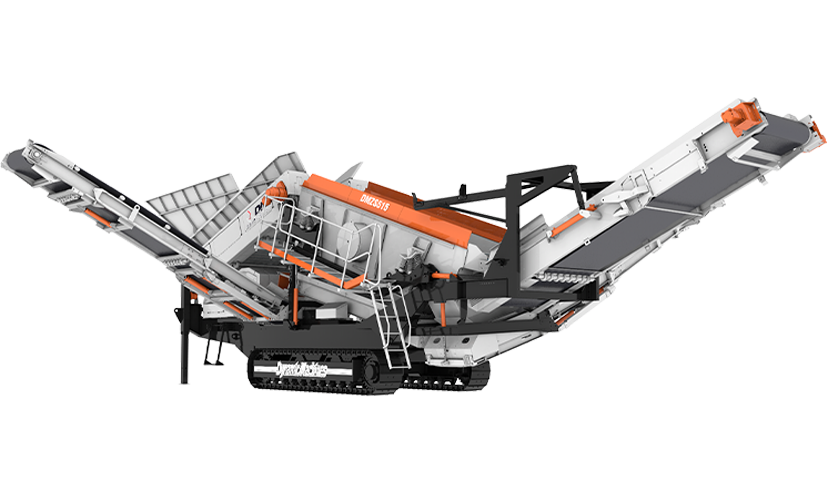Machinery Weight 55-72t
Max Feeding size(mm) ≤700mm
Hopper Volume(m³) /
The Impact Hammer Crusher Factory, renowned for its robust design and efficient crushing capabilities, faces unique challenges when dealing with wet materials. Wet materials can impact the efficiency, safety, and longevity of the crushing equipment. This article will delve into the critical considerations and precautions that an Impact Hammer Crusher Factory must take to effectively manage the processing of wet materials.

The inherent challenges of wet material processing in an Impact Hammer Crusher Factory include increased wear and tear on machinery, potential slippage hazards, and the risk of material clogging. To address these issues, the factory must implement a comprehensive strategy that encompasses equipment selection, maintenance practices, and operational adjustments.
The selection of appropriate hammers for the Impact Hammer Crusher Factory is paramount when processing wet materials. Hammers designed for wet crushing are more resistant to corrosion and are less likely to accumulate material, reducing downtime for cleaning and maintenance. Furthermore, the use of wear-resistant materials in the construction of hammers can extend their lifespan and reduce the frequency of replacement, thereby lowering operational costs.
In addition to equipment selection, the Impact Hammer Crusher Factory must prioritize regular maintenance of its machinery. Wet materials can accelerate corrosion, causing a decrease in the structural integrity of the crusher components. A proactive maintenance schedule that includes cleaning, lubrication, and inspection can preemptively identify and rectify potential issues before they escalate into more significant problems.
Adjusting the operational parameters of the Impact Hammer Crusher Factory is also crucial when processing wet materials. The Impact Hammer Crusher Factory should consider reducing the feed rate to prevent overloading the crusher, which can cause jamming and increased wear. Additionally, the Impact Hammer Crusher Factory may need to adjust the rotor speed to optimize the crushing process for wet materials, ensuring that the material is effectively reduced in size without causing excessive strain on the machinery.
The factory must also implement safety measures to protect its workforce. Wet conditions can make the workplace slippery, increasing the risk of accidents. Installing non-slip flooring, providing appropriate personal protective equipment, and conducting regular safety training are essential precautions to ensure the well-being of the employees.
Moreover, the Impact Hammer Crusher Factory should invest in dust suppression systems to manage the fine particles generated from the crushing process. Wet materials can produce a significant amount of dust, which can be harmful to both the environment and the health of the workers. Proper dust control measures not only protect the health of the employees but also comply with environmental regulations.
Lastly, the factory should consider the environmental impact of processing wet materials. Disposal of excess water and the management of wet waste products must be done in an eco-friendly manner to prevent soil and water contamination. The adoption of sustainable practices, such as recycling water and using waste materials for secondary applications, can contribute to a greener and more sustainable operation.
In conclusion, the Impact Hammer Crusher Factory must take a multifaceted approach to effectively process wet materials. By selecting the right equipment, maintaining a stringent maintenance schedule, adjusting operational parameters, prioritizing safety, implementing dust control measures, and adopting environmentally friendly practices, the factory can overcome the challenges associated with wet material processing and maintain a high level of efficiency and safety.
Machinery Weight 53-62t
Max Feeding size(mm) ≤600mm
Hopper Volume(m³) 80-360t/h
Machinery Weight 55-57t
Max Feeding size(mm) ≤215mm
Hopper Volume(m³) /
Machinery Weight 33-35t
Max Feeding size(mm) 150-400t/h
Hopper Volume(m³) 2.5
Machinery Weight 33t
Max Feeding size(mm) 150-400t/h
Hopper Volume(m³) 7m³
Machinery Weight 54-63t
Max Feeding size(mm) ≤600mm
Hopper Volume(m³) /
Machinery Weight 9.5-75t
Max Feeding size(mm) ≤1000mm
Hopper Volume(m³) 61-1204t/h
Just let we know what you want, and we will get in touch with you as soon as possible!